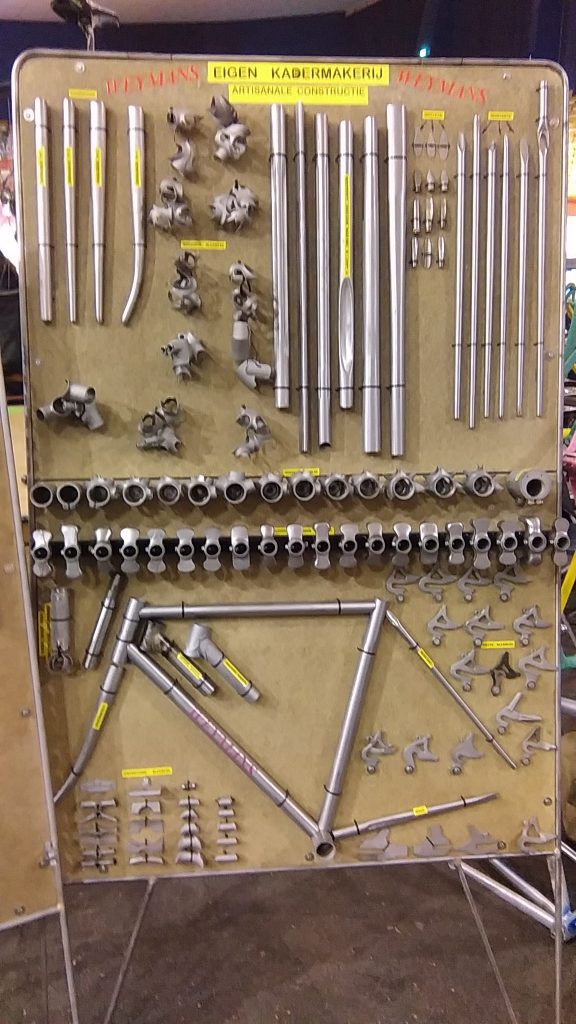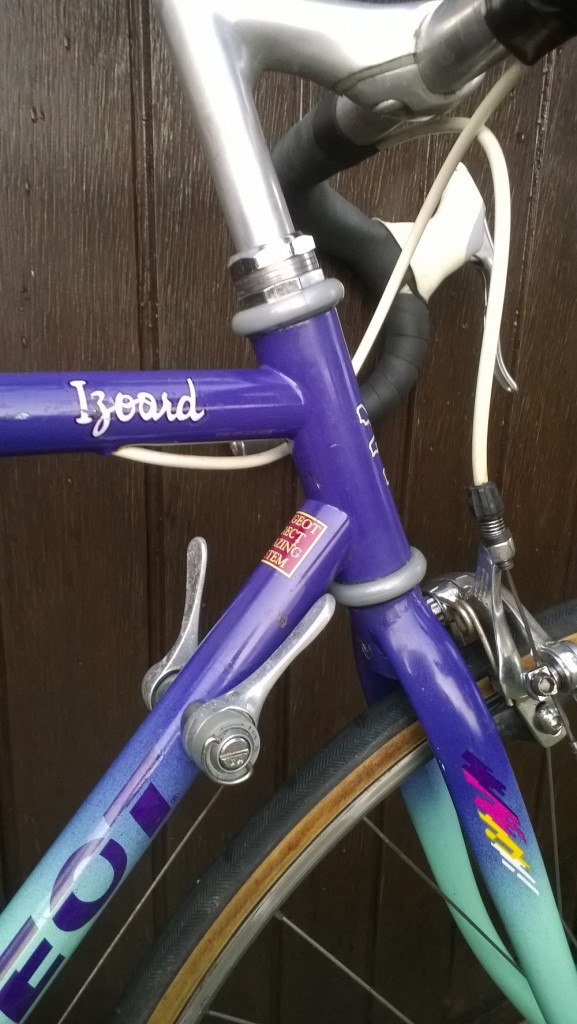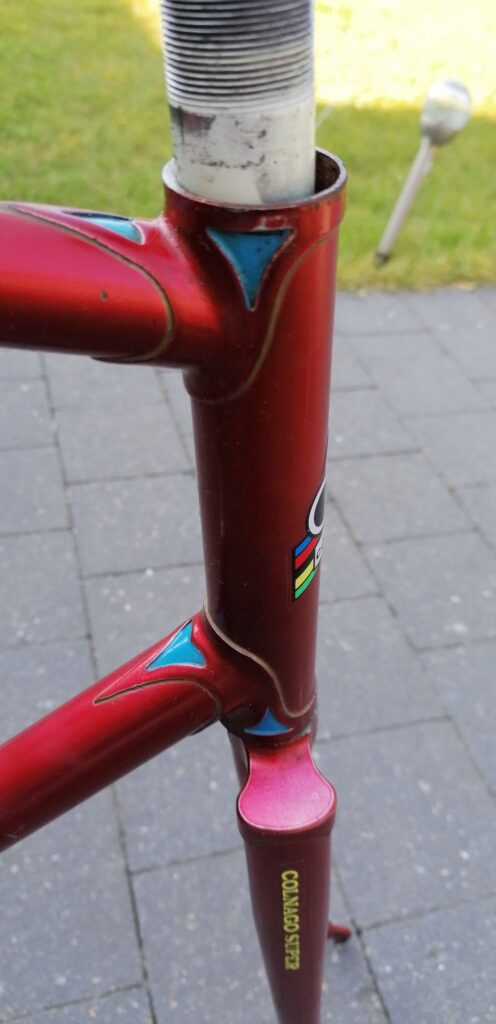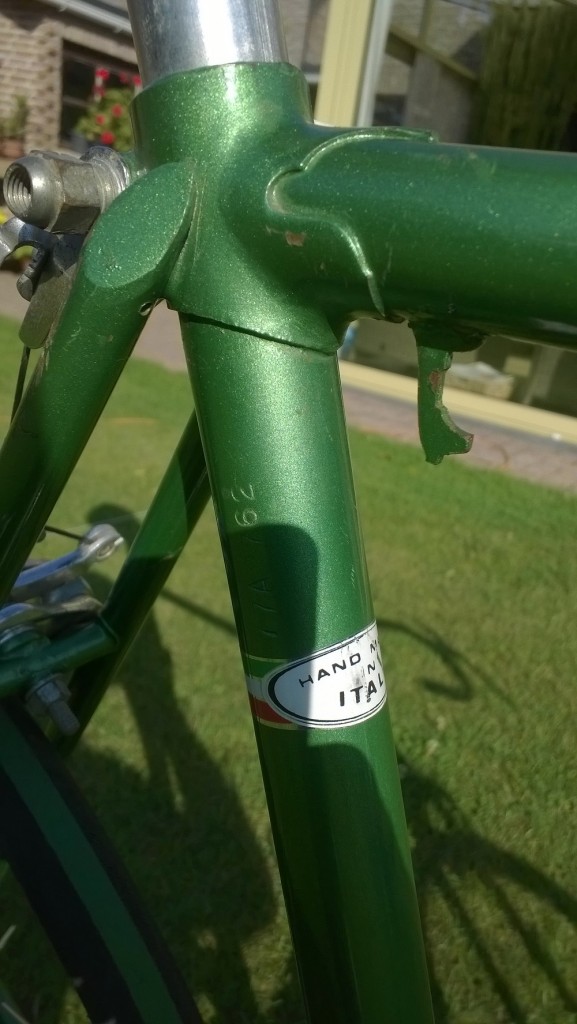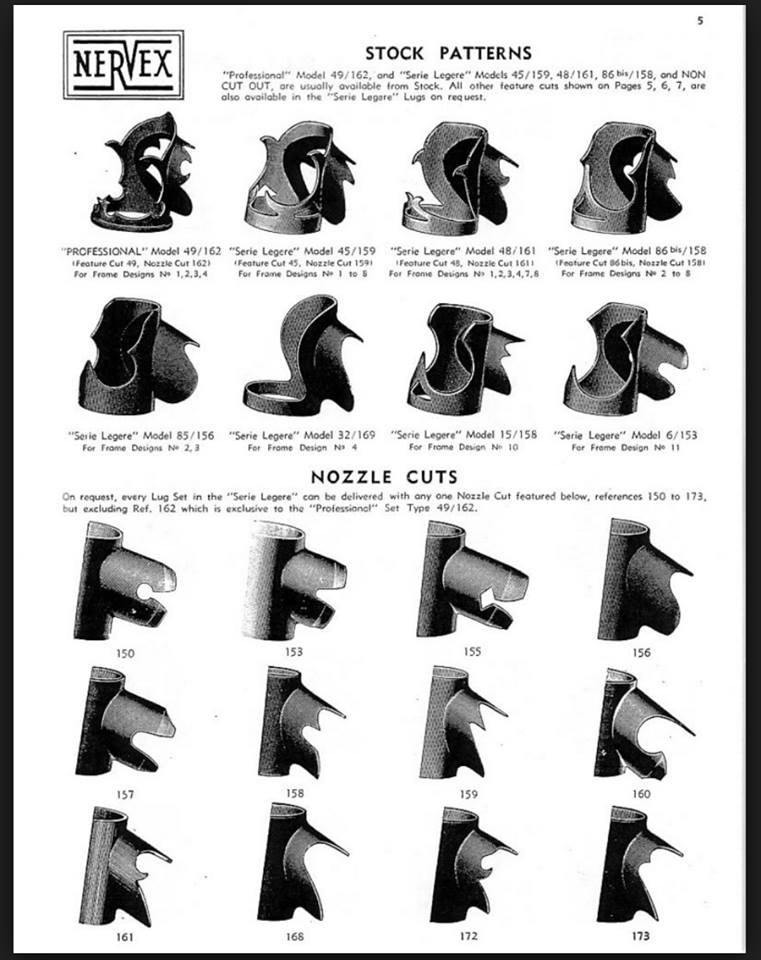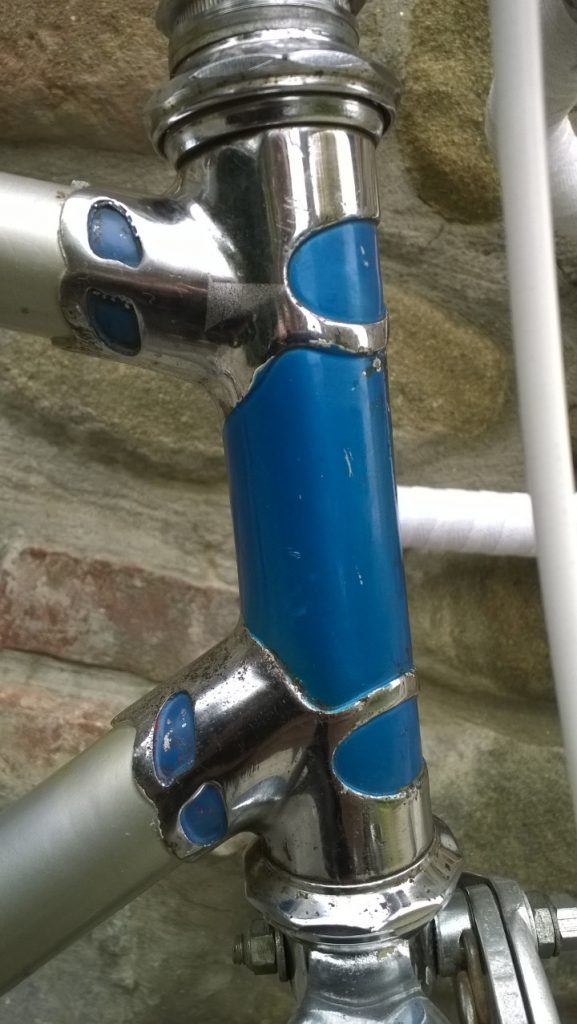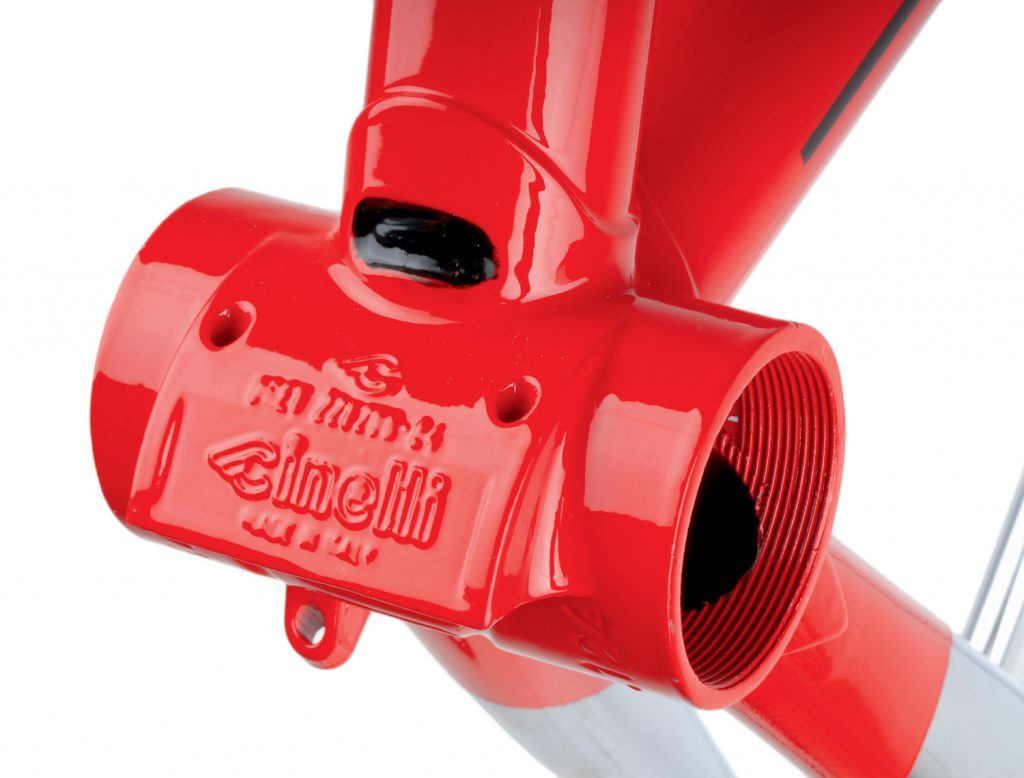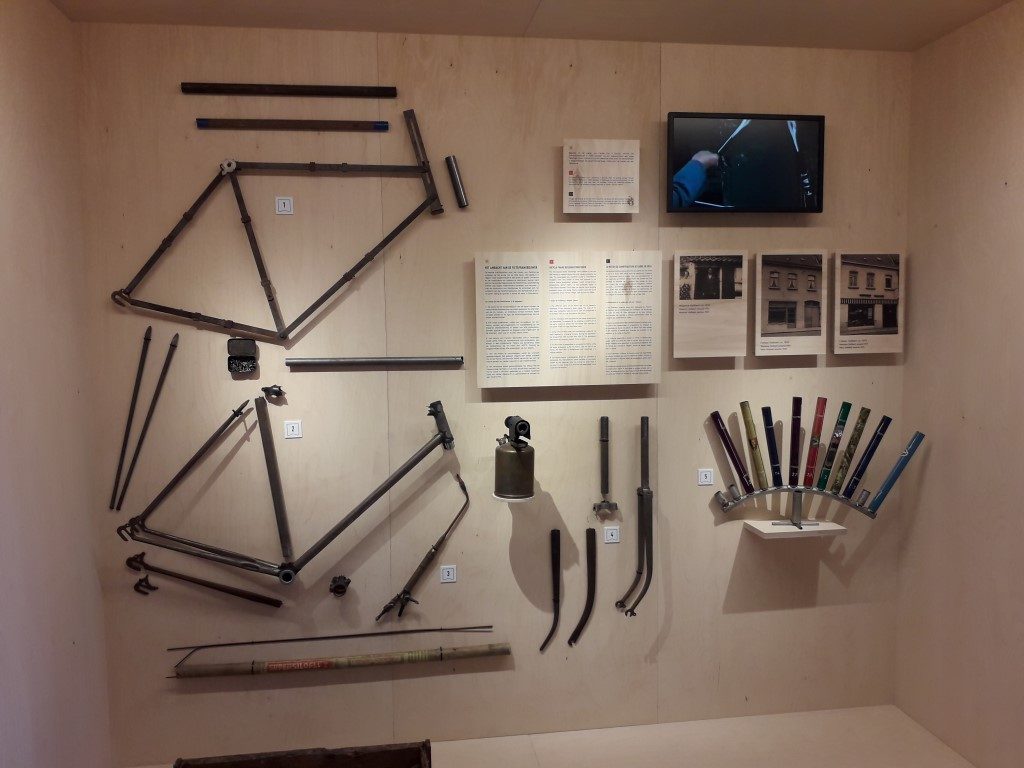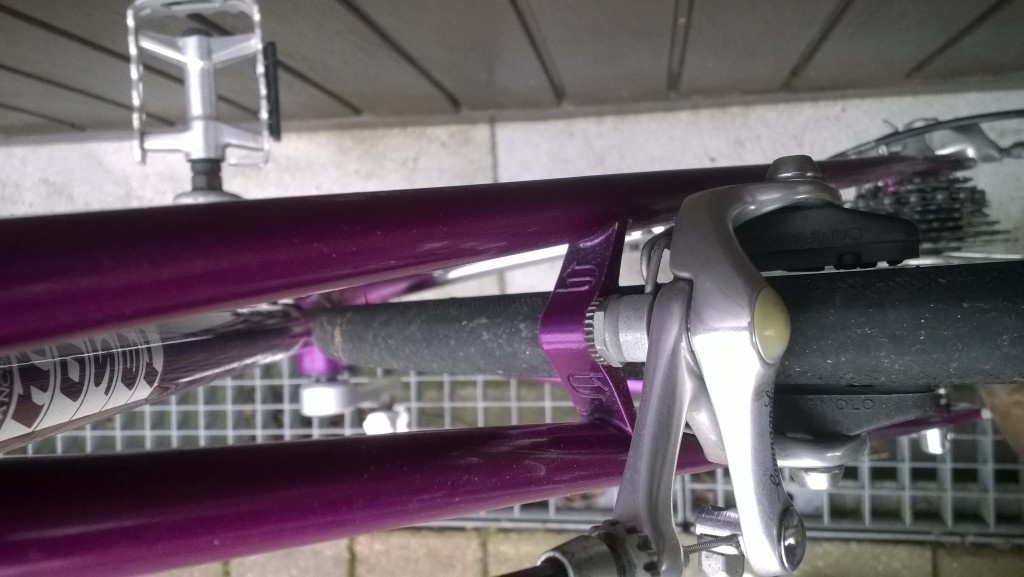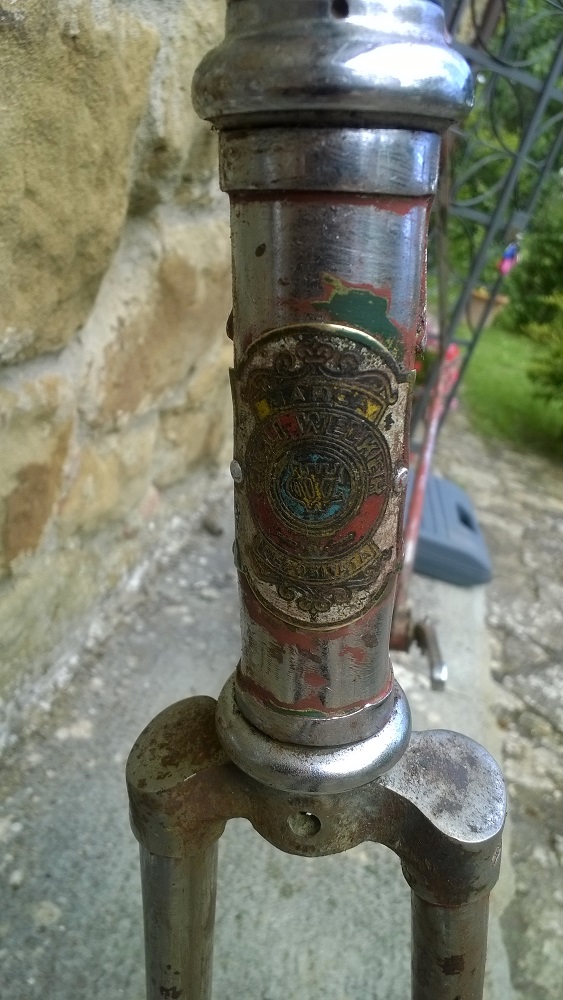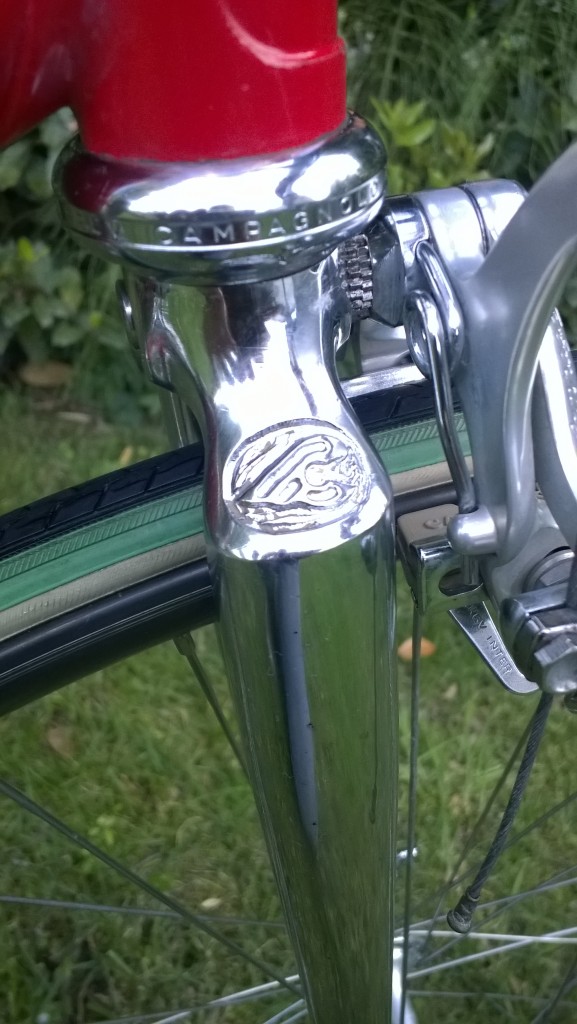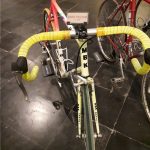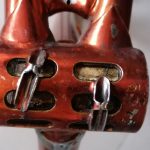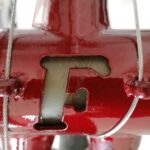In this article we describe how a steel bicycle frame is constructed and which parts it consists of.
The bicycle frame is made up of single tubes: top tube, seat tube, down tube, head tube and twin smaller tubes: seatstays and chainstays. These tubes are made of steel and can range from simple heavy gas tubes to high-quality tubes, the main producers are/were:
- Columbus
- Tange
- Reynolds
- Oria
- Vitus
- Super Carbonite
- Ishiwata
Lugs, bracket and pads
The double tubes are attached to each other by means of pre-made connections / coupling pieces (lugs in English).
In total there are 3 types of lugs: the saddle lug and the upper and lower headset lug. With steel bicycle frames, these lugs can almost always be seen on the outside of the tubes (external) but can also be incorporated into the tubes (internal). The seat stays are welded to the seat lug.
The lugs were usually pressed or cut from steel plates and then welded together, but sometimes they were also cast. On the cheaper bikes these lugs were very simple, but on the more expensive ones they were trimmed and were then aesthetically much nicer. Examples are the Nervex lugs, Hetchings, Prugnat S4 lugs or the lugs used with the Colnago Arabesque. Chromed lugs were also often used.
At the bottom, the seat stay, seat tube and down tube come together in the bottom bracket, also known simply as the bottom bracket. Especially on bikes for professionals, holes were made in the bottom bracket to make the frame as light as possible. Usually, the bicycle manufacturers also used the bracket to identify their frame: with a serial number and a symbol, their name, figure or logo of their bicycle brand.
The lugs were also used to place their pantos on. These are usually engravings with their logo, but it could also be their name or model of the frame. You can find more about this in the article How can you know who made the bicycle frame?
You also see many bicycles with a bottom bracket with Cinelli on it. Cinelli had invented the revolutionary bracket Cinelli Spoiler in 1984, which was used by many bicycle mechanics because it allows air to flow through the bracket, which prevents rusting.
The upright and chainstays are connected by means of a dropout or pad, called pattens in English. The most important ones were supplied by Campagnolo, Shimano, Gipiemme, Milremo, … You can also find their name on them.
Brazing of bicycle frame
All tubes were brazed at the joints with silver or brass solder (also known as brazing). This was the most important work and with this the quality of the bike stood or fell. It was (and still is) a specialist job. For this work, the frame with tubes, lugs and pads was first fixed in a kind of mold, after which everything was welded together.
In addition to an aesthetic reason of cut lugs, you also have the advantage that the solder is more spread around the tubes and thus ensures better adhesion.
A bridge was usually placed between the 2 tubes of both the upright and the horizontal rear fork to give more strength to the frame. Especially the rear bridge at the standing rear fork could often have a different shape, as with Eddy Merckx. Moser bicycles, etc. in the form of 2 arches or at Gazelle in the form of a butterfly.
However, the more expensive models of the best-known brands sometimes lack the swingarm in the chainstay.
The front fork
In the beginning, the front fork was also assembled where the 2 rods of the front fork were welded into a connection, called the fork crown. Only later was this connection omitted and the rods were welded directly together.
Since the 1970s, the chromed front fork became more and more common. Other parts of the bicycle, such as the rear forks, were also increasingly chromed.
The front fork is attached to the frame by means of a headset that consists of, among other things, fixed cups that are pressed into the frame, loose cups and rings.

